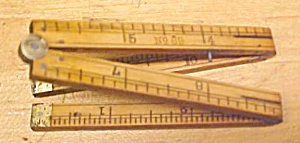bridgebuster
Active member
I'm curious about drafting policies in other firms/offices. Where I work, the department has a little more than three engineers per drafter. We also have two drafting trainees as part of a government contract requirement.
Our department policy is that engineers shouldn't do any drafting. This is primarily a utilization issue, although there are older people like me who are not well-versed in CADD. Our drafters do quality work and they're well paid - about the same as an engineer with 10 years experience. The trainees are paid a little more than half of an entry level engineer.
Over the next 10 years +/- I don't see much of a future for CADD drafters. In another office I worked in, the younger engineers did their own drafting. The one or two drafters we had typically worked with those not fluent in CADD or did the clean-up work on the drawings. As people like me retire there's going to be less of a demand for drafters. The way I see it, either the majority of our higher paid drafters will be let go and/or the entry level CADD drafters will never earn anything close to what the experienced people earn.
Our department policy is that engineers shouldn't do any drafting. This is primarily a utilization issue, although there are older people like me who are not well-versed in CADD. Our drafters do quality work and they're well paid - about the same as an engineer with 10 years experience. The trainees are paid a little more than half of an entry level engineer.
Over the next 10 years +/- I don't see much of a future for CADD drafters. In another office I worked in, the younger engineers did their own drafting. The one or two drafters we had typically worked with those not fluent in CADD or did the clean-up work on the drawings. As people like me retire there's going to be less of a demand for drafters. The way I see it, either the majority of our higher paid drafters will be let go and/or the entry level CADD drafters will never earn anything close to what the experienced people earn.


![[2thumbsup] [2thumbsup] [2thumbsup]](/data/assets/smilies/2thumbsup.gif)
![[pc3] [pc3] [pc3]](/data/assets/smilies/pc3.gif) In my opinion engineers are engineers and draftees are draftees. Sadly over time it has been assumed anyone who can open a computer and start up windows is a 'draftee'. I myself trained as a draftee on the board, then transitioned to CAD before studying to become an engineer. I never ever regret my drafting background, the draftees we do have can not bulsh** me because they know I have a drafting background. A draftee who knows what they are doing is as rear as hensteeth in my opinion and in our company the experienced drafting staff earn the same as the senior engineers. I am happy to wotk out the basic design in cad and then pass it over to the drafting staff to turn into something real.
In my opinion engineers are engineers and draftees are draftees. Sadly over time it has been assumed anyone who can open a computer and start up windows is a 'draftee'. I myself trained as a draftee on the board, then transitioned to CAD before studying to become an engineer. I never ever regret my drafting background, the draftees we do have can not bulsh** me because they know I have a drafting background. A draftee who knows what they are doing is as rear as hensteeth in my opinion and in our company the experienced drafting staff earn the same as the senior engineers. I am happy to wotk out the basic design in cad and then pass it over to the drafting staff to turn into something real.